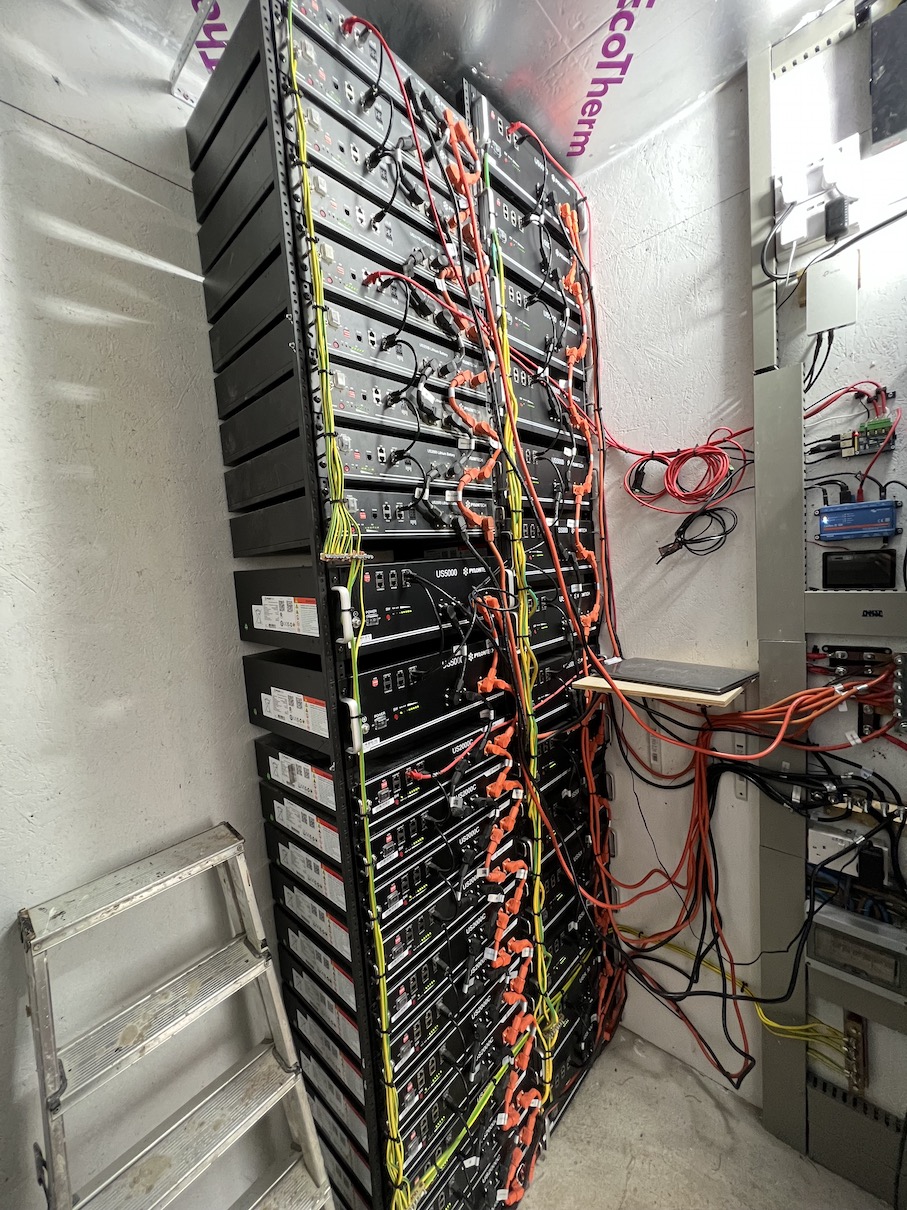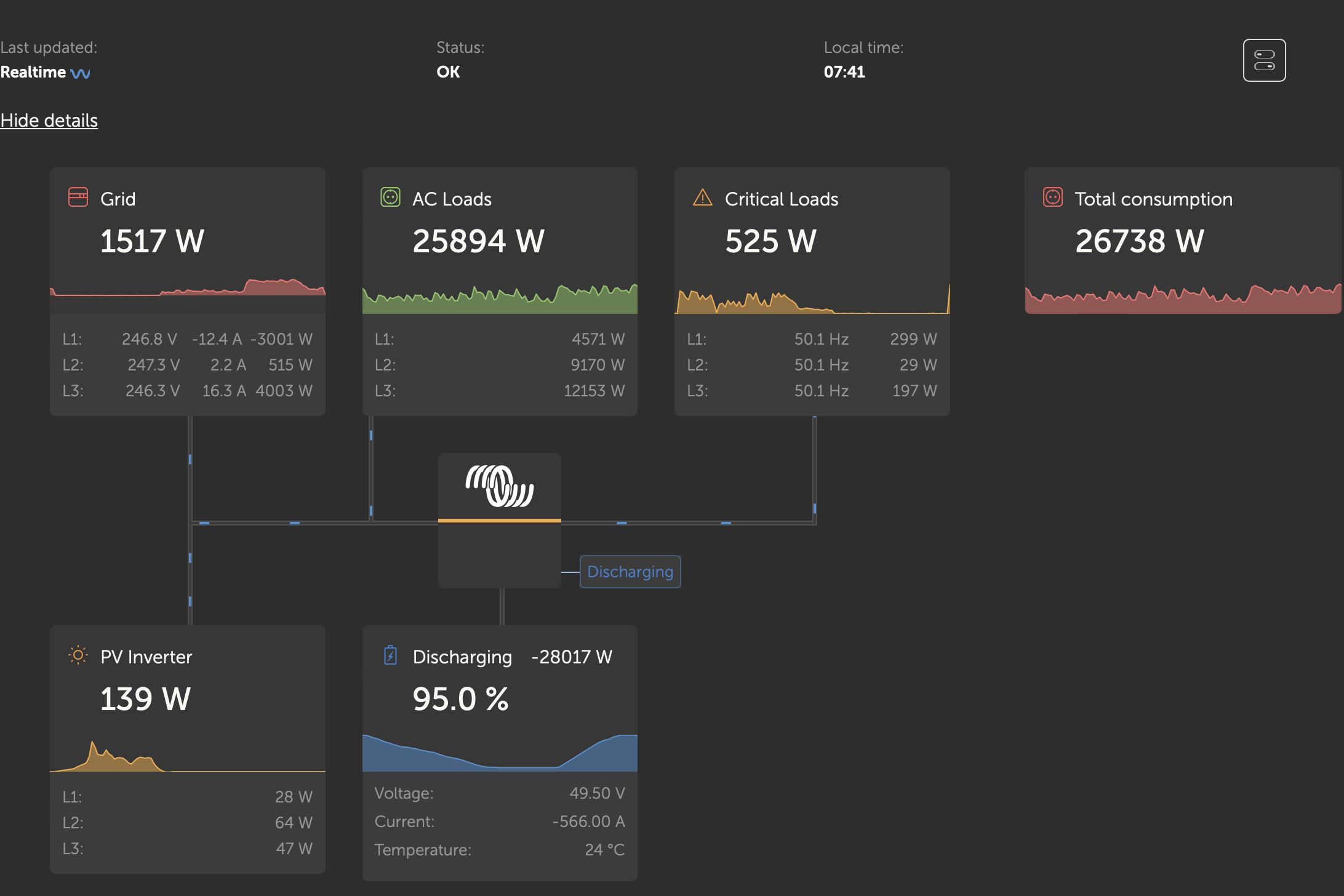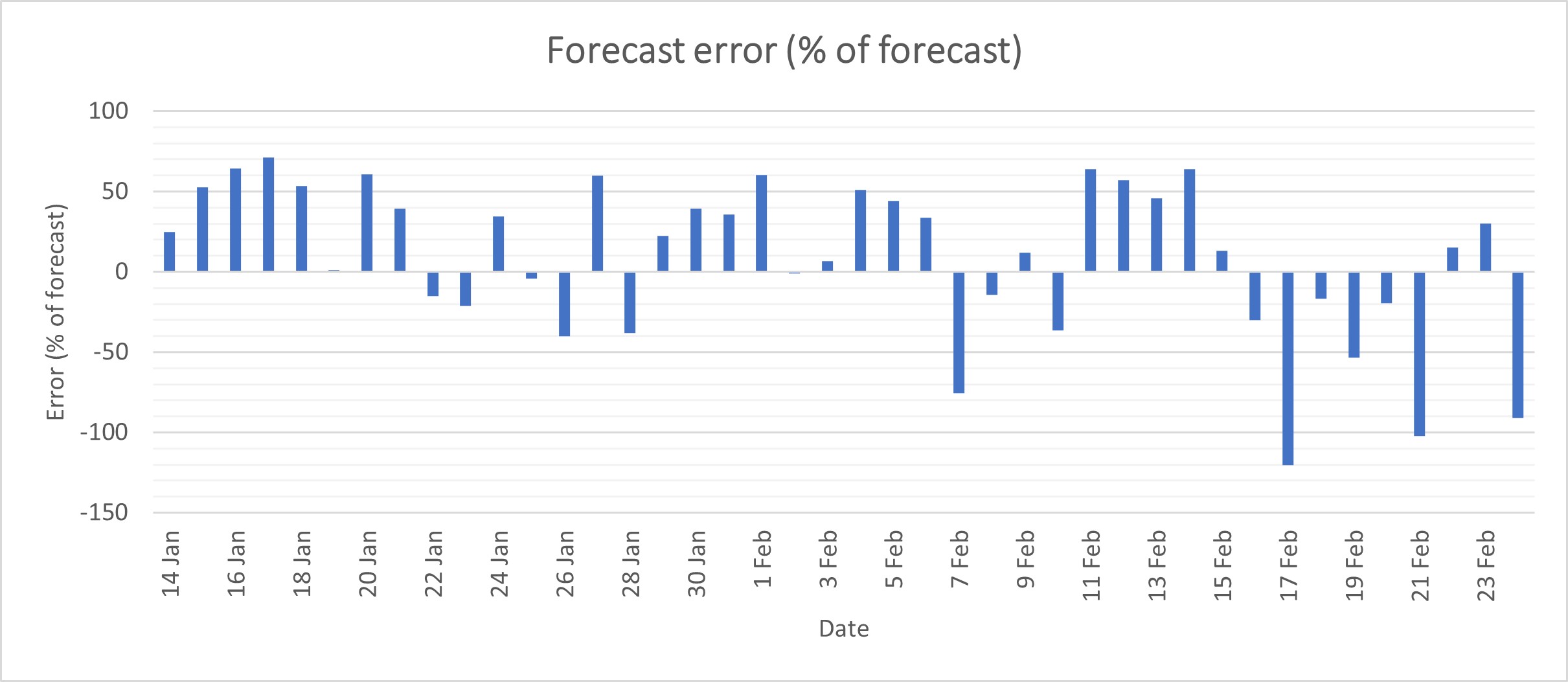Please see the attached diagram of my setup, and photographs.
I'm looking for some thoughts and suggestions on the next step, which is protecting me against grid failure. Right now - if grid fails, everything goes dead.
I do have a manual generator changeover switch which can switch my load over to the AC-OUT of the Victron, but this is mainly connected to GRID instead of VICTRON because my loads are too high (when you take into account the fact batteries need to charge from GRID/SOLAR at the same time as loads running. For example - it's quite common to see 55kW throughput just after midnight when 3x inverters are charging, and other loads such as heaters are running too.
I'm considering:
1. Replacing the changeover with an Automatic Changeover so that on grid fail it automatically flips to the Victron.
2. Installing a diesel generator, and connect that to VICTRON AC-IN-2.
3. Installing a new 3-phase armoured cable to the house to separate out ESSENTIAL Loads. Quite specifically to take the Car Chargers and Main Heat Pumps off onto another circuit. If I did this, it would mean that I could permanently run most stuff through the AC-OUT instead of being grid linked.
4. Installing a solenoid to cut off the US2000 batteries when they get down to around 11% charge, and then continue to drain from the US2000C+US5000 down to 5%.
The reason for this post - is just to start a discussion and help me make the right decision on how to achieve this. Does anyone have any thoughts?
The challenges I've battled so far:
1. Combining four stacks of Pylontech batteries that are not otherwise compatible - US5000,US2000C and US2000. All four are separately read using RS485, which is then combined together to produce a single CAN feed to the VICTRON.
2. Trying to get ESS Mode 3 working. Total fail. Regularly at least one phase would just ignore my set points. Eventually I just gave up- and decided to use MODE 2 instead, which worked perfectly. However I had to do the next step in order to achieve it...
3. Reading Eastern SDM630 meters using MODBUS and then sending this to the VICTRON by simulating a GAVAZZI meter.
4. Collecting a weather API to predict the weather and use this to choose how much to pre-charge batteries overnight.
5. Adding a nice web interface, alerts, graphing and emails.
All of the above written in Node, and running on a Raspberry PI with SIX RS485 interfaces and one CAN interface.
Diagram:

Photos:


My Raspberry PI Interface:



Victron Site:



